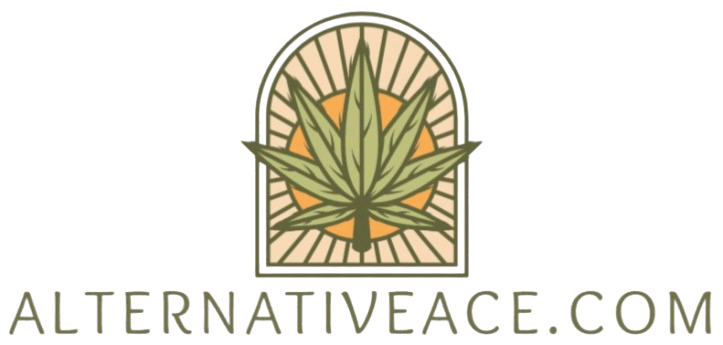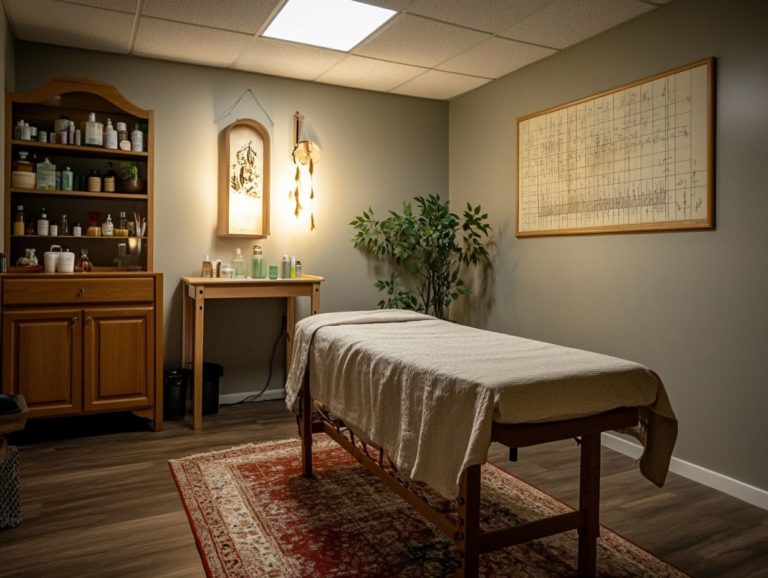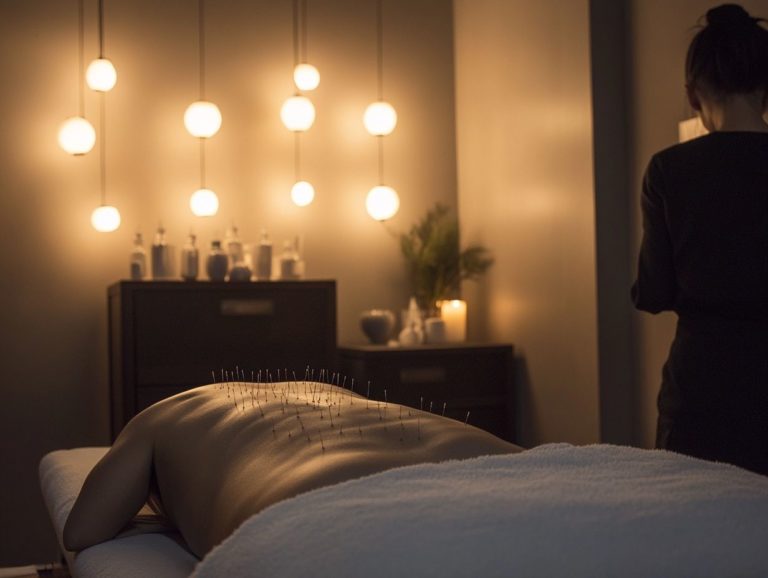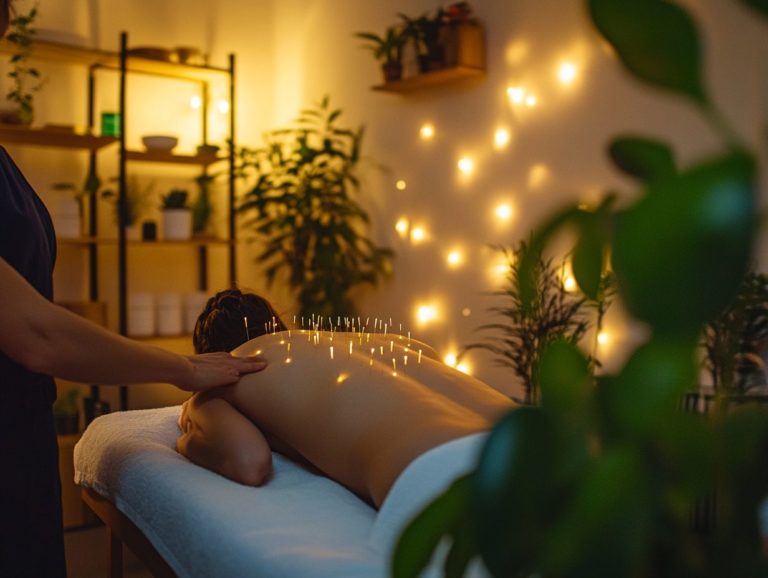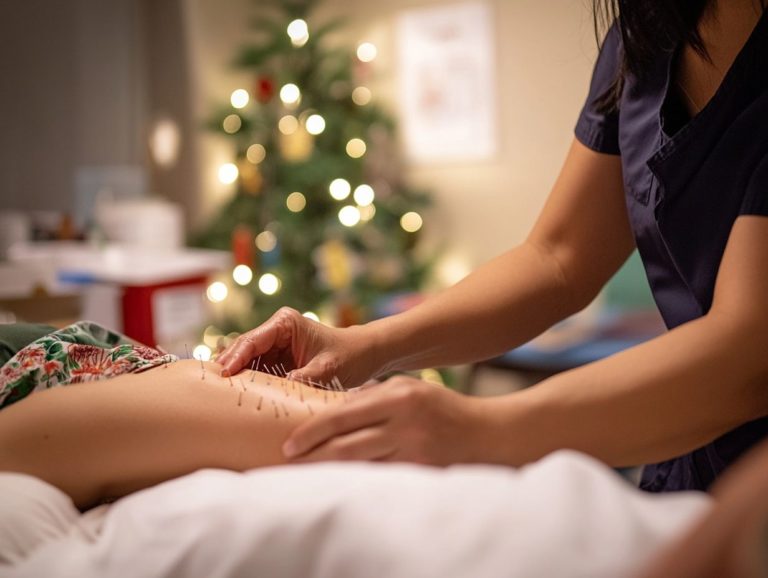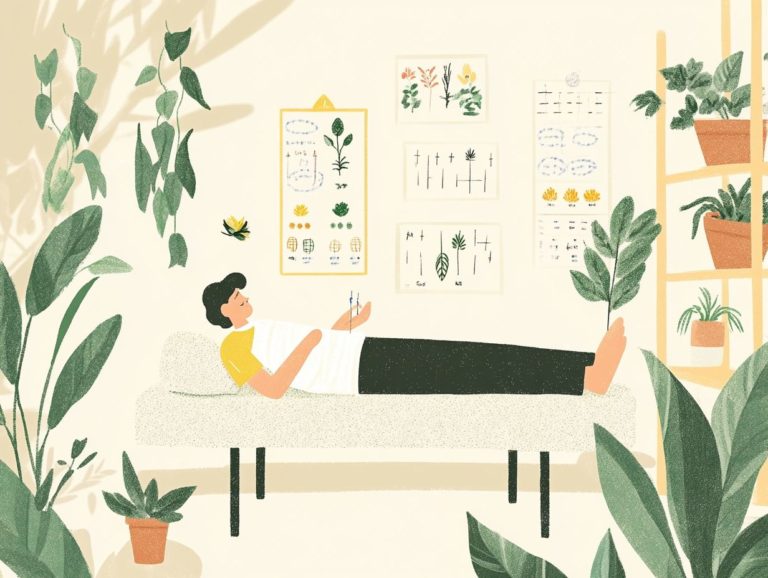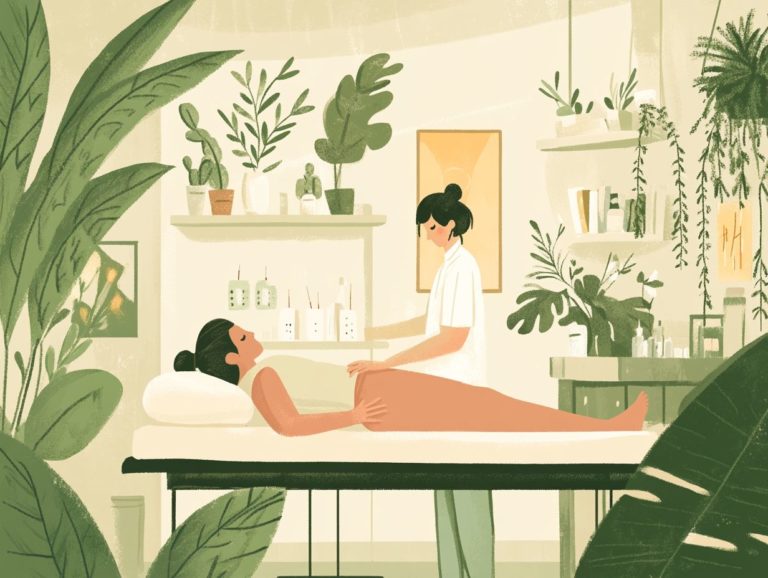5 Essential Tools Used in Acupuncture Therapy
Acupuncture therapy has surged in popularity, celebrated for its holistic approach to wellness that utilizes various tools to enhance its effectiveness.
This article delves into five essential tools employed in acupuncture: needles, moxibustion, cupping, acupressure tools, and Gua Sha. Each of these tools serves a distinct purpose in promoting health and alleviating particular conditions.
You’ll also uncover how these techniques function, the benefits they offer, potential risks, and practical tips for integrating them into your practice. Explore how these ancient methods can fundamentally transform your approach to healing.
Contents
- Key Takeaways:
- 1. Acupuncture Needles
- 2. Moxibustion
- 3. Cupping
- 4. Acupressure Tools
- 5. Gua Sha Tools
- What Is Acupuncture Therapy and How Does It Work?
- How Can These Tools Help with Specific Health Conditions?
- Are There Any Risks or Side Effects to Using These Tools in Acupuncture Therapy?
- How Can One Incorporate These Tools into Their Acupuncture Practice?
- Frequently Asked Questions
- What are the 5 essential tools used in acupuncture therapy?
- How are needles used in acupuncture therapy?
- What is moxibustion and how is it used in acupuncture therapy?
- Can you explain how cupping is used in acupuncture therapy?
- What is gua sha and what is its role in acupuncture therapy?
- How is electroacupuncture different from traditional acupuncture?
Key Takeaways:
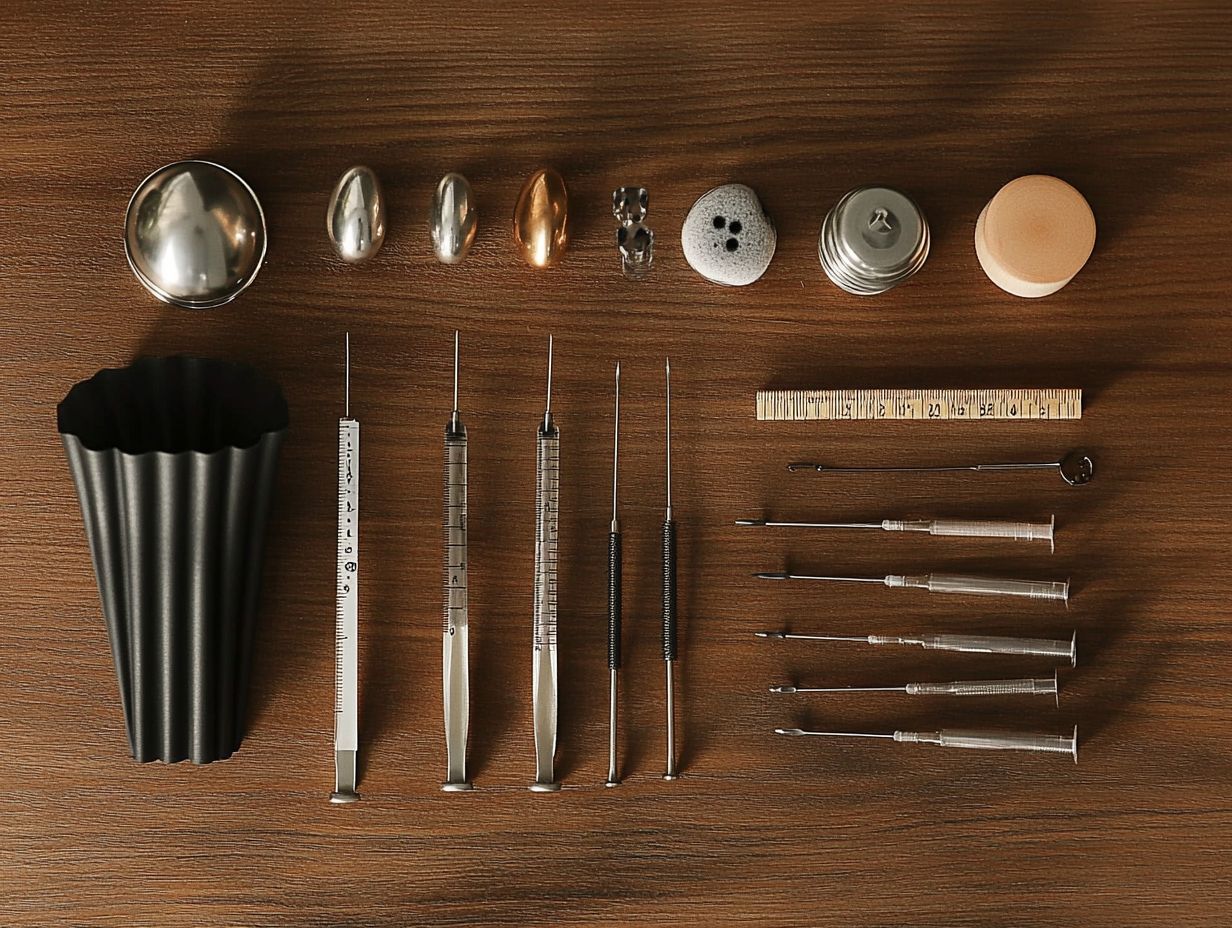
Acupuncture therapy uses specialized tools like needles, moxibustion, cupping, acupressure, and gua sha to stimulate specific points on the body. These tools can help with a variety of health conditions and can be incorporated into an acupuncture practice to enhance treatment effectiveness. To explore more, consider trying 5 popular acupuncture techniques that can further improve your experience. While generally safe, it is important to use these tools properly and under the guidance of a trained acupuncturist to avoid any potential risks or side effects.
1. Acupuncture Needles
Acupuncture needles are essential tools in Traditional Chinese Medicine (TCM), designed to stimulate specific acupuncture points. By promoting energy flow, these needles address a variety of health concerns, ranging from chronic pain to anxiety.
You ll find that these fine needles are strategically inserted into the skin. This activates your body s natural healing processes, offering therapeutic benefits that enhance overall wellness.
In Mississauga, skilled practitioners like Dr. Vaughn Cook integrate these techniques into comprehensive wellness programs, ensuring you feel comfortable and satisfied throughout your healing journey.
These needles come in various sizes and materials, with stainless steel being the go-to for its durability and hygiene. They typically range from 13mm to 130mm in length and vary in gauge; finer needles are designed to be less invasive, guaranteeing minimal discomfort during insertion.
Studies show that inserting acupuncture needles not only helps energy flow but also triggers the release of endorphins, making it effective for pain management. Clinical studies have demonstrated significant improvements in both pain relief and emotional well-being, solidifying acupuncture’s place as a valuable complementary therapy in holistic health care.
2. Moxibustion
Moxibustion is a therapeutic technique rooted in Traditional Chinese Medicine that involves burning mugwort (moxa) near acupuncture points to promote energy flow and enhance your body’s natural healing abilities. Often paired with acupuncture, this method can be particularly effective for alleviating pain and addressing chronic conditions, such as digestive disorders, allowing you to experience significant improvements in your overall wellness.
At Kaizen Health Group, moxibustion has garnered attention as a sought-after alternative for those interested in holistic treatments.
Moxibustion has a rich history and is embraced by many cultures for its health benefits. The process involves carefully applying heat to specific areas, which not only aids in muscle relaxation but also significantly improves blood circulation, contributing to your overall vitality.
Many who have undergone this treatment report heightened energy levels and relief from tension. Patient experiences frequently underscore the satisfaction with the non-invasive nature of moxibustion, describing it as both soothing and restorative. This therapeutic approach is gaining popularity as more individuals seek natural remedies tailored to their unique health challenges.
Discover how these tools can enhance your wellness journey today!
3. Cupping
Cupping therapy is a Traditional Chinese Medicine technique. It involves placing cups on your skin to create suction. This process improves blood flow and helps muscles relax, making it an effective tool for relieving pain and aiding in the healing of chronic conditions.
In wellness programs throughout Mississauga, this method is a valuable addition. Many patients at clinics like Kaizen Health Group notice improvements in their overall comfort and energy levels after just a few cupping therapy sessions.
The practice of cupping includes several types:
- Dry cupping focuses on improving blood circulation and relieving tight muscles without any skin penetration. This makes it perfect for those who prefer to avoid needles.
- Wet cupping combines suction with controlled incisions, offering enhanced detoxification and deeper pain relief.
- Fire cupping generates strong suction through heat, delivering a unique sensory experience while promoting relaxation.
Research suggests these techniques effectively manage pain, enhance circulation, and alleviate stress. They enable you to embrace a more balanced lifestyle.
4. Acupressure Tools
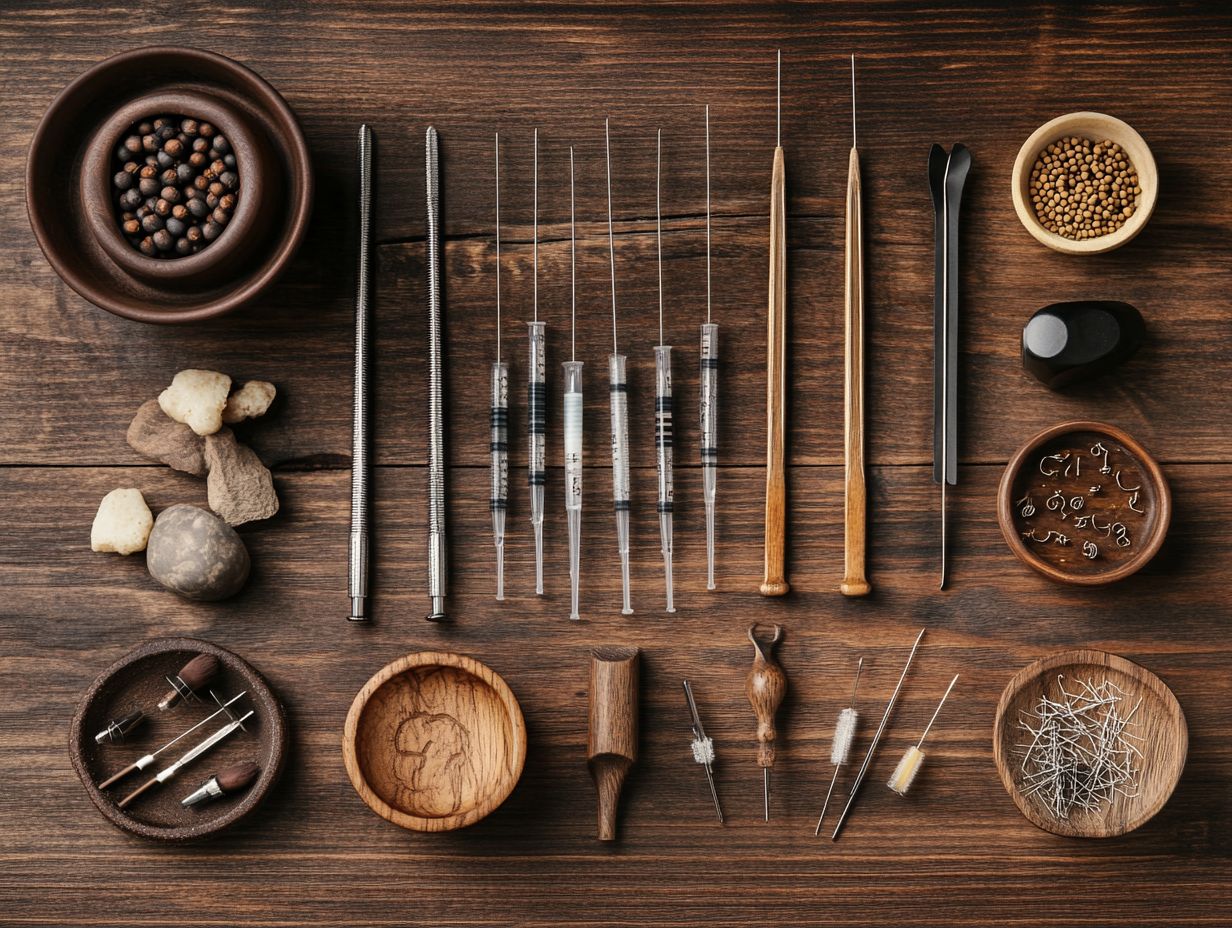
Acupressure tools are invaluable in alternative medicine. They harness the principles of acupuncture to deliver effective pain relief and enhance emotional well-being.
These tools apply pressure to important acupuncture points. They enhance the benefits of wellness programs while providing convenient options to manage stress and tension in a safe environment. Many practitioners recommend incorporating these tools into a holistic health approach to ensure you receive comprehensive care.
From handheld massagers to acupressure mats, these instruments come in various designs but share a singular purpose: alleviating discomfort and fostering relaxation.
Regular use can help manage pain and lift your mood, contributing to enhanced mental health.
Easily integrated into your daily routine whether during a quick work break or as part of an evening self-care ritual acupressure tools offer accessibility that gives you the power to take proactive steps toward your well-being. They re practical additions to any wellness toolkit, allowing you to prioritize your health with ease.
5. Gua Sha Tools
Gua Sha tools play a pivotal role in alternative therapies. They provide you with a unique method for muscle relaxation while enhancing blood circulation through the gentle scraping of your skin. This ancient practice, rooted in Traditional Chinese Medicine, is believed to alleviate pain, reduce inflammation, and support your body s natural healing processes.
You ll find Gua Sha widely utilized in clinics like Kaizen Health Group, where it has gained acclaim for its effectiveness in managing chronic pain and boosting overall wellness.
You can choose from various Gua Sha tools jade, rose quartz, and bian stone each boasting distinct properties that contribute to their effectiveness. For instance, jade is celebrated for its cooling effects, while rose quartz is thought to amplify emotional healing.
Whether you’re using these tools for facial treatments to enhance skin elasticity and achieve a luminous complexion, or for body applications to relieve muscle tension, they offer versatile benefits.
Scientific studies suggest that Gua Sha enhances circulation and supports your immune system by stimulating lymphatic flow, which refers to how fluid moves through your body to support your immune system. It also promotes skin health by encouraging cellular regeneration.
By incorporating Gua Sha into your wellness routine, you can experience noticeable improvements in both your physical and emotional well-being.
What Is Acupuncture Therapy and How Does It Work?
Acupuncture therapy is a key part of Traditional Chinese Medicine. It stimulates specific points on your body to promote healing and restore balance.
This practice effectively manages pain and enhances your overall wellness.
By using fine needles, acupuncture regulates your body s energy flow, known as Qi. It addresses a wide range of health concerns, from chronic pain to anxiety and digestive issues.
As you begin your healing journey, you may notice improvements in both your physical and emotional well-being.
This leads to a truly holistic approach to health.
The methodology of acupuncture is based on ancient philosophies that highlight the connection between your body, mind, and spirit.
With a rich history of thousands of years, acupuncture often pairs well with techniques like moxibustion and cupping.
Moxibustion involves burning mugwort near acupuncture points, while cupping uses suction to boost circulation and promote healing.
These methods enhance the benefits of acupuncture and contribute to a comprehensive wellness program.
Many individuals find that combining these therapies helps with pain management and fosters relaxation.
If you seek relief and rejuvenation, acupuncture can be a transformative choice for your daily life.
What Are the Different Types of Acupuncture Techniques?
Acupuncture offers various techniques to meet your unique needs, including traditional needle insertion, electroacupuncture, and auriculotherapy.
Each method is designed to provide holistic pain management and wellness solutions.
These approaches tackle chronic conditions while ensuring personalized care for enhanced satisfaction.
Practitioners at facilities like Kaizen Health Group use these techniques to create tailored treatments that fit your health goals.
Traditional needle insertion stimulates specific points along energy pathways to alleviate pain and enhance energy flow.
Electroacupuncture introduces gentle electrical currents to boost results.
Auriculotherapy focuses on the ear to address various issues, showcasing acupuncture’s remarkable versatility.
Many patients report transformative experiences, with significant symptom reductions and improved mood.
Research supports acupuncture as an effective adjunct in pain relief strategies.
What Are the Benefits of Using These Tools in Acupuncture Therapy?
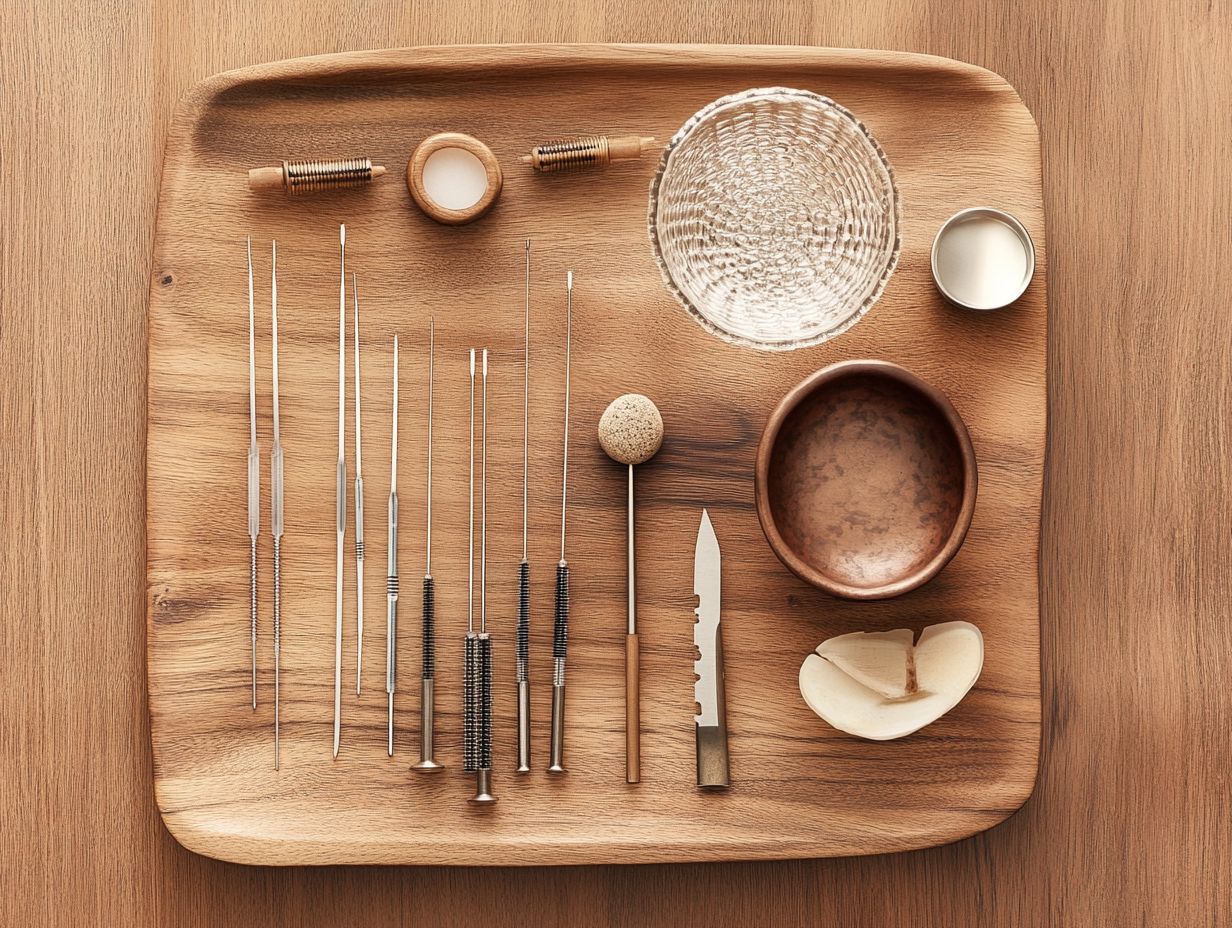
Using various acupuncture tools can elevate your therapy experience. This offers a multi-faceted approach to health and wellness.
Tools like TDP lamps, ear seeds, and Gua Sha complement traditional needle insertion, optimizing pain relief while addressing stress and emotional well-being.
This holistic strategy deepens your understanding of your body s healing capabilities.
For example, TDP lamps use infrared heat to improve circulation and ease muscular tension, which many patients recovering from chronic pain appreciate.
Ear seeds provide a non-invasive way to stimulate acupoints, often reducing anxiety and promoting relaxation.
Gua Sha gently scrapes the skin to promote lymphatic drainage and reduce inflammation, enhancing recovery.
Countless people are experiencing remarkable improvements in their emotional and physical well-being after incorporating these tools into their routine.
How Can These Tools Help with Specific Health Conditions?
Acupuncture tools are essential for addressing specific health conditions. They deliver targeted therapeutic benefits that can ease chronic pain, reduce anxiety, and improve digestive health.
Using techniques like electroacupuncture or cupping therapy can lead to significant relief from various ailments, enhancing your overall quality of life. Facilities such as Kaizen Health Group have reported positive outcomes for patients who include these tools in their wellness programs.
Evidence supports electroacupuncture s effectiveness in managing neuropathic pain, providing a lifeline for those who have battled discomfort for years. For instance, a patient with fibromyalgia experienced a remarkable reduction in pain levels after just a few sessions.
Patient testimonials highlight the soothing effects of cupping therapy. This method not only alleviates muscle tension but also boosts blood circulation, contributing to an improved sense of well-being.
These acupuncture methods are distinguished not only by their rich history in Eastern medicine but also by their tangible, evidence-backed benefits in modern holistic health practices.
Are There Any Risks or Side Effects to Using These Tools in Acupuncture Therapy?
While acupuncture therapy is widely regarded as safe, it’s vital to be aware of the potential risks and side effects. After needle insertion, cupping, or moxibustion, some patients might experience bruising, soreness, or mild discomfort.
Practitioners should prioritize quality care and ensure a safe environment to minimize these risks and enhance the overall effectiveness of pain management therapies.
Improper technique or using non-sterile equipment can lead to serious complications, such as infections or nerve damage. To mitigate these risks, choose qualified practitioners who adhere to strict safety protocols and hygiene standards.
Creating a comfortable setting and discussing potential side effects openly empowers you to express your concerns. Regular consultations and attentive aftercare are crucial in fostering a positive experience, as they help identify any adverse reactions early, ultimately supporting your healing journey.
How Can One Incorporate These Tools into Their Acupuncture Practice?
Using different acupuncture tools in your practice can significantly elevate treatment methodologies and boost patient satisfaction, offering a more holistic approach to wellness. Blend traditional methods with innovative techniques like electroacupuncture and Gua Sha to meet your patients’ diverse needs.
This approach allows you to craft a more effective and personalized treatment plan that addresses both physical and emotional health concerns.
Invest in training to stay updated on the latest techniques and technologies, ensuring your skills remain relevant and effective. Allocating sufficient resources whether time or materials helps seamlessly integrate these tools into your daily practice.
Talk openly with your patients about the benefits and expected outcomes of these methods. This fosters trust and enhances their overall experience.
By prioritizing these practical steps, you can improve treatment efficacy and elevate the level of care you provide, leading to lasting positive changes in your patients’ well-being.
Frequently Asked Questions
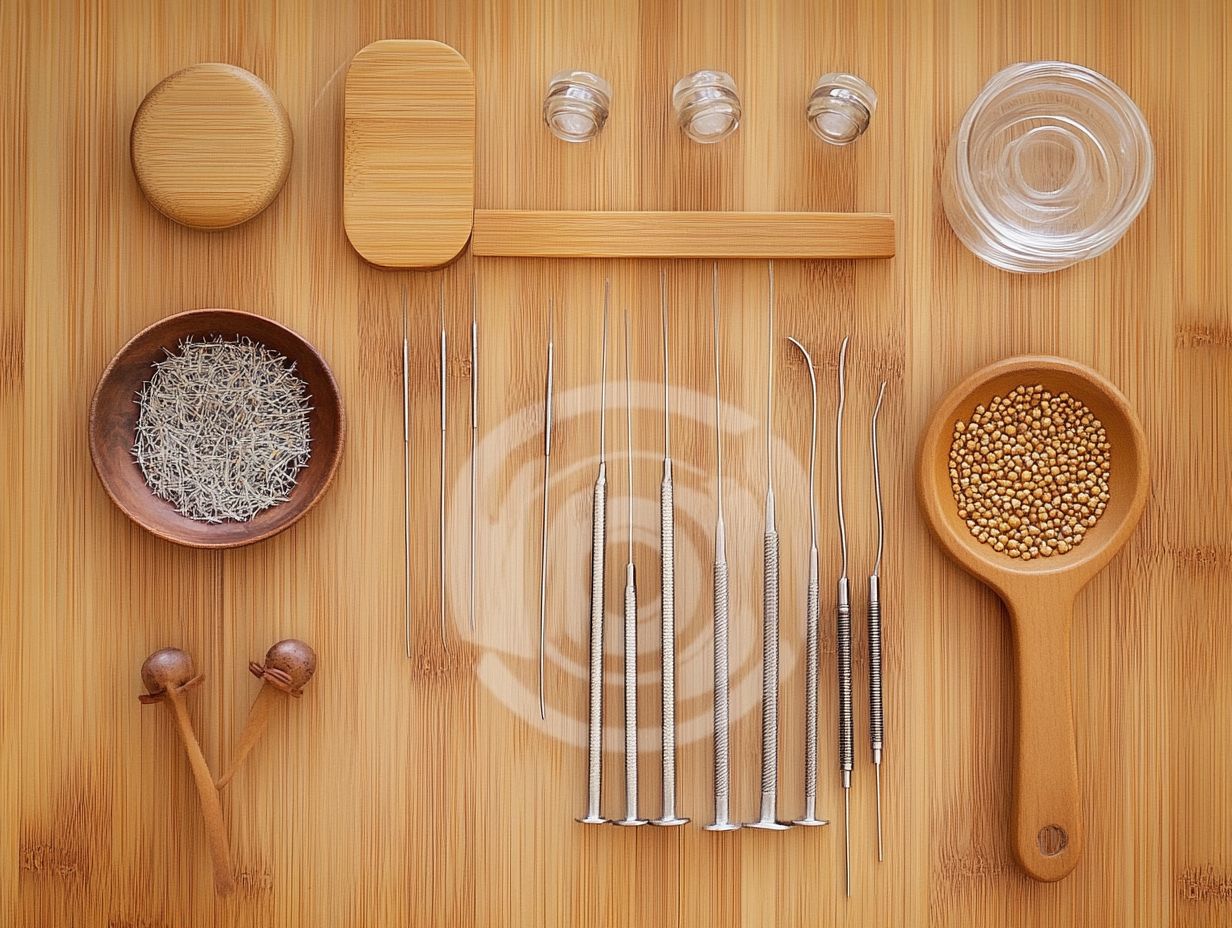
What are the 5 essential tools used in acupuncture therapy?
The 5 essential tools used in acupuncture therapy are needles, moxibustion, cupping, gua sha, and electroacupuncture.
How are needles used in acupuncture therapy?
Needles are the primary tool used in acupuncture therapy. They are thin, sterile, and solid, and they are inserted into specific points on the body to stimulate and balance the flow of energy.
What is moxibustion and how is it used in acupuncture therapy?
Moxibustion is a technique in which dried mugwort leaves are burned near the skin to stimulate acupuncture points. It is used to warm and invigorate the flow of energy in the body.
Discover the powerful benefits of acupuncture therapy! Explore more about acupuncture tools or book a consultation today.
Can you explain how cupping is used in acupuncture therapy?
Cupping is a therapy where glass or silicone cups create suction on the skin. This technique stimulates blood flow and promotes healing, helping relieve muscle tension and pain.
What is gua sha and what is its role in acupuncture therapy?
Gua sha uses a smooth-edged tool to scrape the skin. This method stimulates blood flow, relieves muscle tension, and improves circulation.
How is electroacupuncture different from traditional acupuncture?
Electroacupuncture is a modern version of acupuncture. It involves passing a small electric current through two acupuncture needles, enhancing the traditional treatment’s effects for pain relief and muscle spasms.
